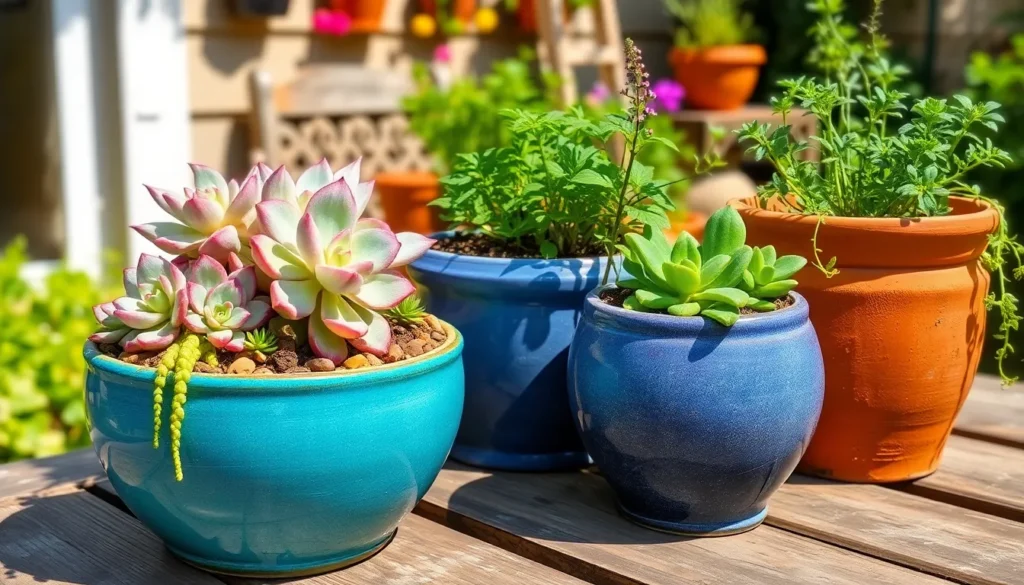Welcome to the vibrant world of container gardening, where creativity blossoms as beautifully as the plants themselves! Whether you’re just starting your gardening journey or have years of experience under your belt, “Creative Container Gardening Ideas” promises to inspire you with innovative designs that transform any space into a lush, green sanctuary. The joy of watching your garden flourish, regardless of the size of your space, is unmatched, and this guide is here to ensure that every plant thrives under your care.
In this guide, you’ll discover a treasure trove of practical design ideas that are as functional as they are beautiful, offering solutions for small balconies, sprawling patios, and everything in between. You’ll gain confidence as you learn how to select the right containers, understand the specific needs of different plants, and create stunning arrangements that make the most of your available space. With each page, you’ll find yourself more equipped to embrace the art of container gardening, reaping the rewards of a verdant oasis that reflects your unique style. Let’s embark on this rewarding journey together, cultivating not just plants but a lasting sense of accomplishment and joy.
Choose Unique Container Materials
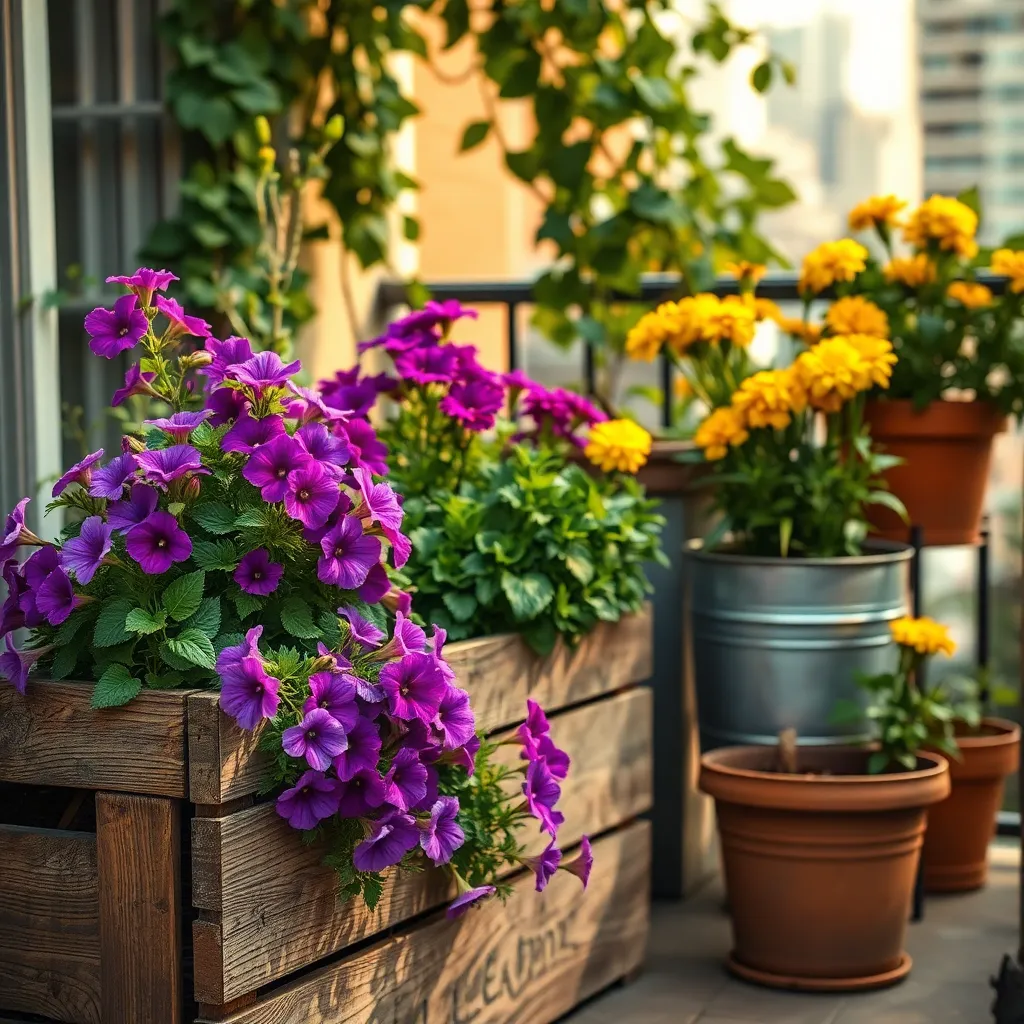
Thinking outside the box with your container choices can add a unique flair to your gardening space. Consider using unexpected materials like old wooden barrels or even vintage suitcases to create an eye-catching display.
When selecting a container, ensure it has adequate drainage to prevent root rot, which is crucial for plant health. To enhance drainage, you can drill additional holes in the bottom of unconventional containers or add a layer of gravel before the soil.
Wooden containers can provide a rustic look and are excellent for insulation, helping maintain consistent soil temperatures. However, they may require treatment with a non-toxic sealant to prevent them from rotting over time.
For those with a creative streak, repurposing metal objects such as buckets or washtubs can be both trendy and sustainable. Make sure to select plants that thrive in warmer soil, as metal containers tend to heat up more quickly in the sun.
Combine Plants for Visual Impact
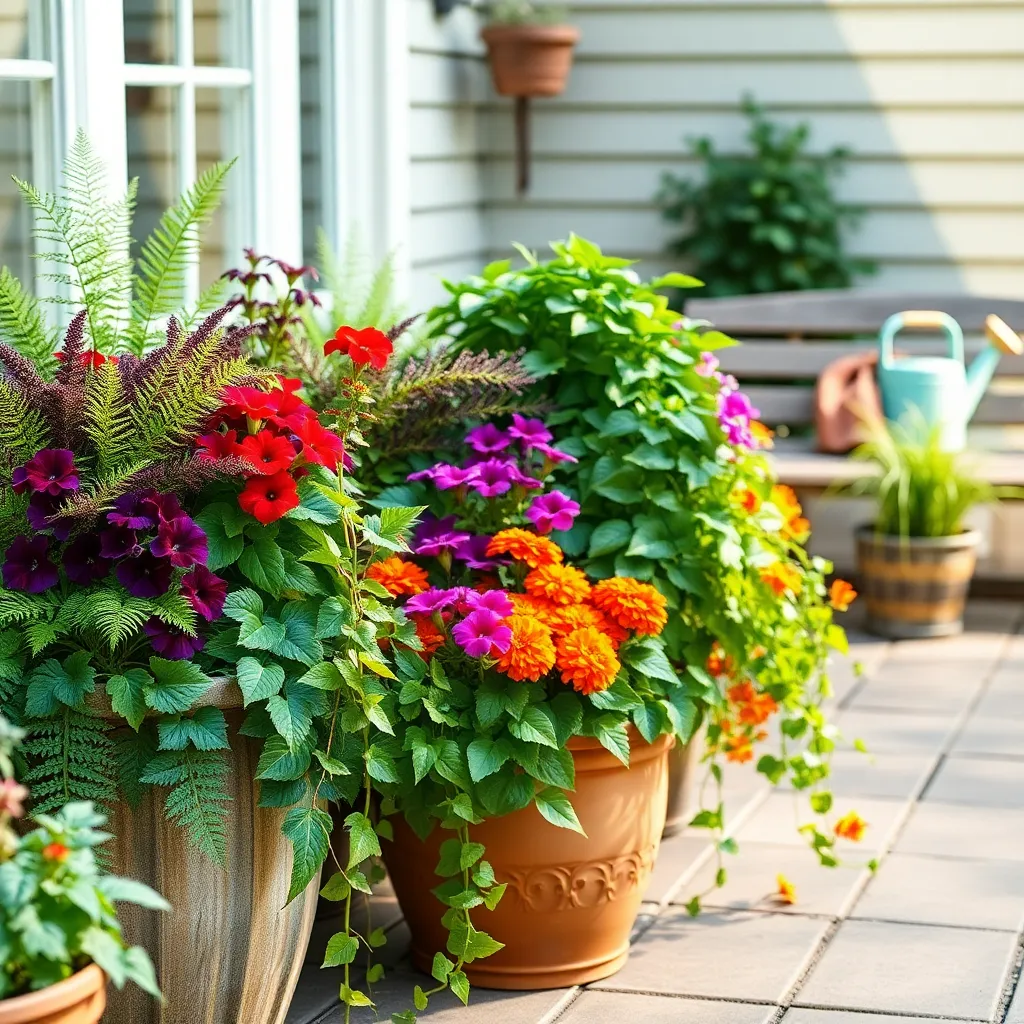
Combining plants in your containers can transform them into stunning displays that capture attention. To achieve this, consider the growth habits and colors of the plants, ensuring they complement each other effectively.
Start by selecting plants with varying heights to create depth and interest. For example, pair tall, spiky plants like ornamental grasses with trailing plants such as sweet potato vine for a dynamic look.
Color coordination is crucial for visual impact. Choose a color palette that either harmonizes or contrasts, such as pairing purple petunias with yellow marigolds for a striking effect.
Beyond aesthetics, it’s essential to match plants with similar care requirements. Ensure all selected plants thrive under the same light conditions—full sun, partial shade, or full shade—and have similar watering needs.
For beginners, start with easy-to-care-for combinations like geraniums, bacopa, and ferns. These plants not only look beautiful together but also have compatible water and sunlight requirements.
Advanced gardeners can experiment with more complex combinations, incorporating herbs and edible plants for both beauty and utility. Consider a mix of basil, purple sage, and trailing nasturtiums, which offer vibrant colors and edible delights.
Incorporate Vertical Planting Techniques
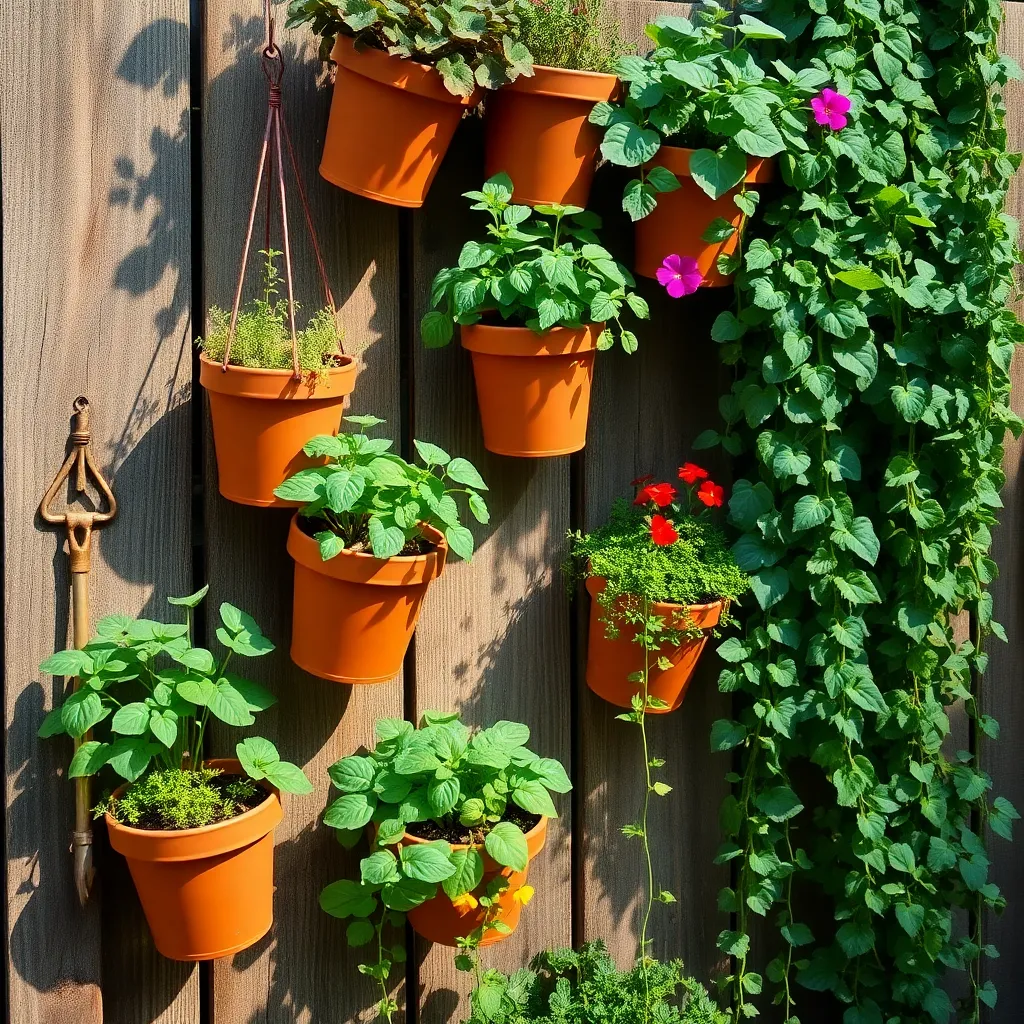
Vertical planting techniques are a fantastic way to maximize space and add dimension to your container garden. Consider using trellises or support structures for plants such as peas, beans, and tomatoes, which naturally grow upwards and thrive with vertical support.
For beginners, starting with a simple vertical wall garden using small containers or pockets can be both rewarding and manageable. Choose herbs like thyme, mint, or basil, which require moderate watering and can be easily harvested from a vertical setup.
To create a living wall, select a lightweight, well-draining soil mix to ensure your vertical garden remains healthy and vibrant. Remember to water these gardens more frequently than traditional containers, as they tend to dry out faster due to increased exposure.
Advanced gardeners might explore growing vines such as clematis or morning glories, which can provide a stunning visual impact. Use sturdy frameworks and ensure adequate sunlight for these plants to encourage robust growth and abundant blooming.
Use Colorful Pots for Accents
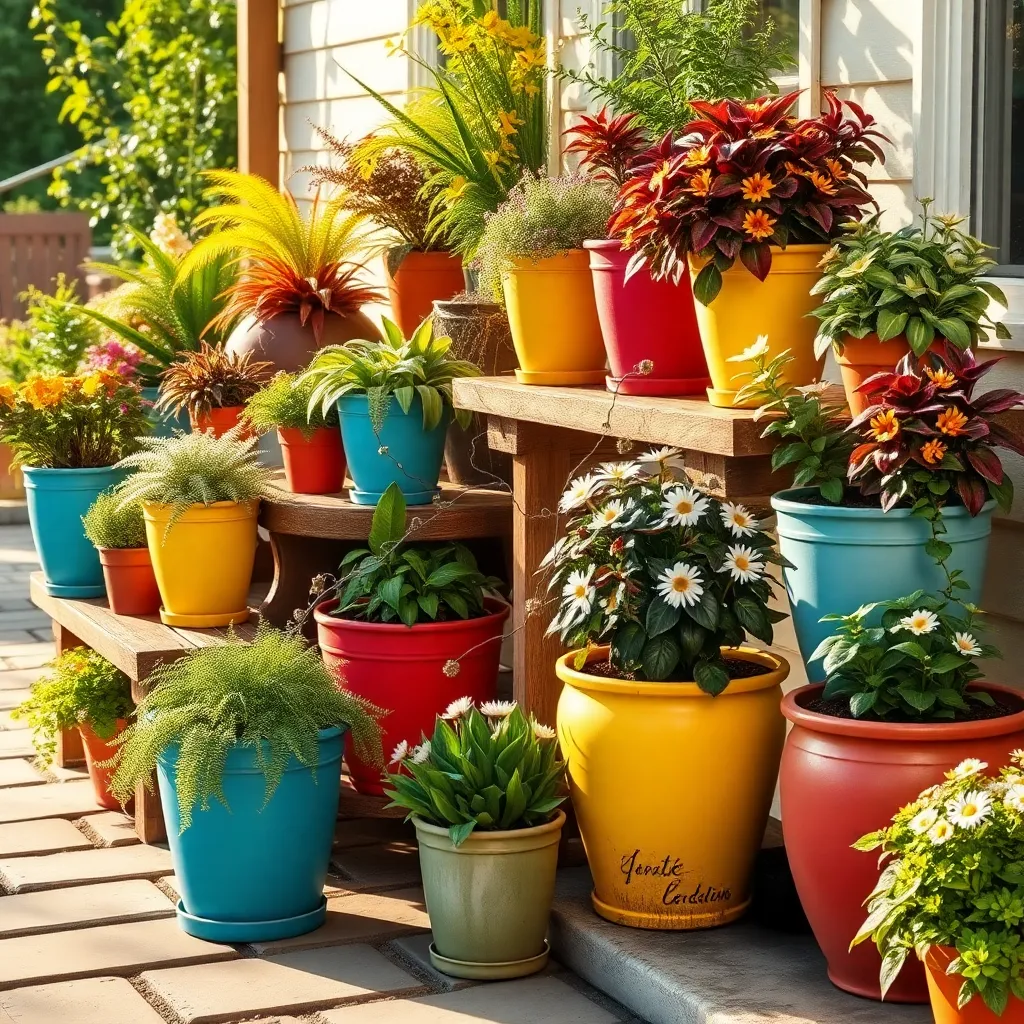
For a vibrant touch in your container garden, using colorful pots can serve as striking accents. Choose pots in shades that complement your plant’s foliage or flowers to create a visually appealing contrast.
It’s essential to select pots that are not only colorful but also suitable for the plants you wish to grow. Ensure the pots have adequate drainage holes to prevent waterlogging, which can harm plant roots.
Consider the material of the pots, as it impacts both the plant’s growing environment and the pot’s durability. Ceramic or terracotta pots retain moisture well but can be heavier, while plastic pots are lightweight and easier to move around.
For advanced gardeners, mixing and matching different pot styles can add depth and interest to your container garden. Experiment with varying pot sizes and shapes, using smaller pots for herbs or succulents and larger ones for small trees or shrubs.
Mix Herbs and Flowers Together
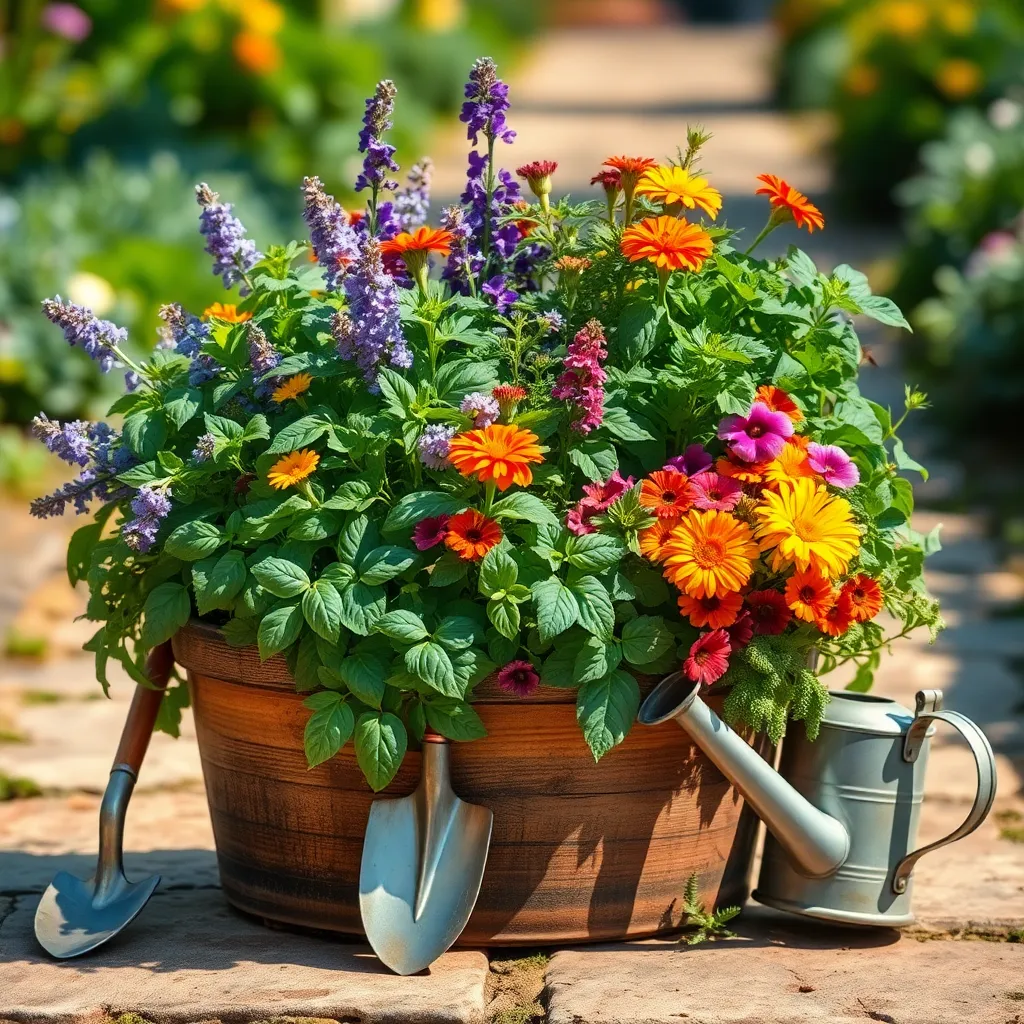
Mixing herbs and flowers in a container can create a visually stunning and functional garden. To start, choose a large pot with good drainage to accommodate different root systems and plant sizes.
Herbs like basil, rosemary, and thyme not only add fragrance but can repel pests from your flowers. For vibrant blooms, consider pairing them with marigolds or nasturtiums, which also thrive in similar sunlight conditions.
Ensure the soil is rich and well-draining; a mix of potting soil with some added compost works wonderfully. Water regularly, but be careful not to over-saturate, as both herbs and flowers can suffer from root rot in overly wet soil.
For beginners, a simple combination could start with lavender and chives, which both enjoy sunny spots and less frequent watering. More advanced gardeners might experiment with companion planting techniques, such as placing mint in a separate container to prevent it from overtaking other plants.
Conclusion: Growing Success with These Plants
As we explored the world of container gardening, we discovered five key relationship concepts that can enrich our personal connections. First, the importance of nurturing growth parallels tending to our relationships with care and attention. Second, choosing the right soil reminds us to build our bonds on a strong foundation of trust and understanding. Third, the significance of variety highlights embracing diversity and unique perspectives within our relationships. Fourth, consistent watering exemplifies the need for regular communication and emotional support. Lastly, pruning symbolizes the necessity to let go of negativity to foster a healthier relationship environment.
Now, take a moment to reflect on one area where you can apply these gardening lessons to your relationships today. Whether it’s reaching out to a friend or planning a date night, small actions can lead to profound growth.
Bookmark this article as a handy reference to revisit these insights. By integrating these creative gardening principles, you are investing in the lifelong success and flourishing of your relationships. Remember, the seeds of today’s efforts are the blossoms of tomorrow’s thriving connections.

